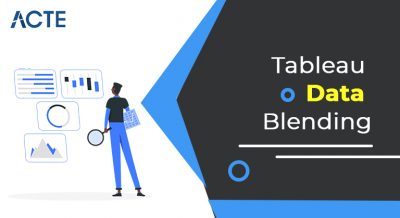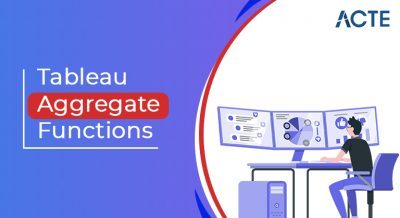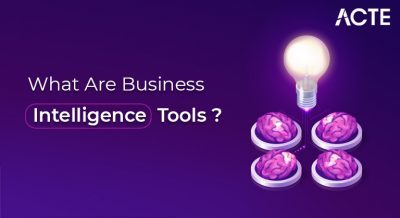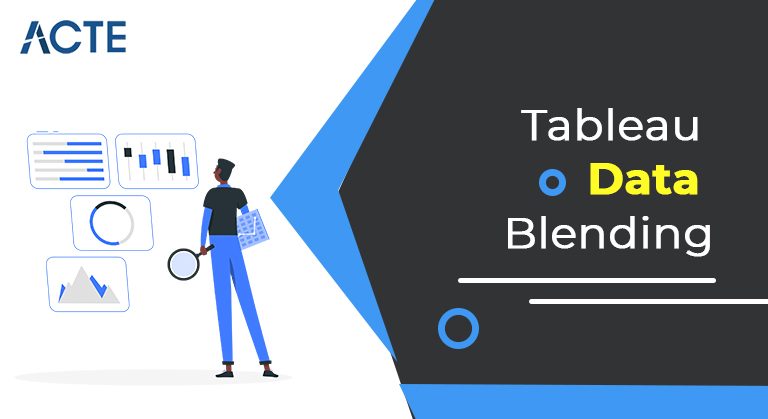
Tableau Desktop, Tableau Online, Tableau Server. Data blending is a method for combining data from multiple sources. Data blending brings in additional information from a secondary data source and displays it with data from the primary data source directly in the view.
- Introduction To Tableau Data Blending
- Define blend relationships for blending
- Steps for blending data
- There are several ways to combine data
- Work across blended data sources
- Why we use Tableau Data Blending
- Understand primary and secondary data source
- Benefits of data blending
- Limitations of Data Blending in Tableau
- Conclusion
Introduction To Tableau Data Blending:
Mixing Data may be a method of mixing Data from multiple sources. Data aggregation brings further info from a secondary Data supply and displays Data from the first Data supply in its read. Data integration is the most powerful component within Tableau. it’s used once there’s Data associated with multiple Data sources, that you would like to investigate along in one look.
For instance, contemplate Sales Data out there on the connected web site still as Target Sales Data in the Associate in Nursing stand out programme. Now, so as to match real sales with targeted auctions, you’ll mix Data supported commonplace size to induce access to the Target Sales target. the 2 sources concerned in compilation Data are known as primary and secondary Data sources. The left link is made between the first Data supply and therefore the secondary Data supply for all Data lines from the first and parallel Data lines from the secondary Data supply.
Define blend relationships for blending:
For the Tableau to understand the way to compile information from multiple sources, there should be constant size or dimensions between the info sources. This commonplace size is termed the association field. Active link fields are known within the secondary information supply window with the active link icon () and potential connected fields are known by the broken link icon ().
For example, within the combination of dealing information and worth, a field field could also be a fascinating link field to investigate a regional assignment and add that assignment.
Note: For integration to figure, link fields should even be shared with values or members. Tableau creates integrated information and supports shared values. As an example, if Colour is the link in each information source, Tableau can match “Purple” information from the first and “Purple” from the second. But “Lt. Blue” won’t map properly to “Light Blue”, thus one in every of them can must be recognized.
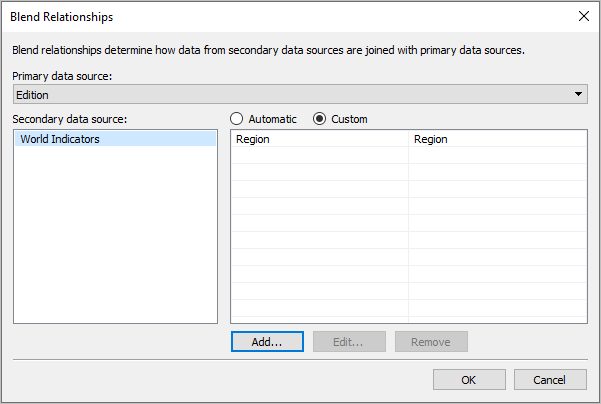
- Make sure the book has many Data sources. A second Data supply must be supplementary in step with Data> New Data supply.
- Tip: Adding another affiliation to the initial Data supply allows relationships and change of integrity on the info supply page. Integration needs 2 or a lot of separate Data sources, that are listed on an individual basis within the Data window.
- Drag the sphere to look at it. Any Data supply that this initial field comes from is the first Data supply.
- Switch to a different Data supply and check that there’s a mixed relationship with the first Data supply.
- If there’s an associate degree orange link field icon (), Data sources are mechanically connected. As long as there’s just one active link, the info may be unified.
- If there are grey, broken link icons (), click the icon next to the sphere that must link the 2 Data sources. it’ll be orange, representing a full of life link.
- If the link icon doesn’t seem close to the sphere you’re trying to find, see outline mix relationships to incorporate it.
- Drag the sphere to the read from the secondary Data supply.
- As shortly as this second Data supply is employed within the same read, integration is established. within the example below, our primary Data supply promoting Objectives and therefore the second sample Data supply – Superstore
Steps for blending data:
Data aggregation is completed on a sheet-by-sheet basis and is established once a field from a secondary Data supply is employed in viewing. to make integration in a very book that’s already connected to a minimum of 2 Data sources, bring the sphere from one Data supply to the sheet — turning into the first Data supply. Switch to a different Data supply and use a field within the same sheet — become a secondary Data supply. The orange link icon can be seen within the Data window, indicating that fields are accustomed to mixed Data sources.
The primary Data supply is indicated by a blue marker within the Data supply. Fields from the first Data supply employed in the read haven’t any references. The second Data supply is indicated by an associate degree orange check on the info supply and therefore the orange bar at the lowest next to the info window. Fields from the secondary Data supply employed in the read have an associate degree orange check.
There are several ways to combine data:
Relationships are the default method and can be used in most cases, including in all tables with different levels of detail. The relationship is flexible and consistent with the analysis structure on the basis of sheet and sheet. However, you cannot create relationships between tables from published data sources. Blending combines tables by adding additional data columns to the same row structures. This can cause data loss or duplication when tables are at different levels of data, and aggregated data sources must be repaired before analysis can begin.
Merging, unlike relationships or joining, never includes data. Instead, it covers a question about each data source independently, the results are compiled at the appropriate level, and the results are visually presented together in the view. As a result, combinations can manage different levels of data and work with published data sources. Blends are also established individually across all sheets and will never be published, because there is no true “integrated data source”, the results of which are already integrated from multiple data sources in the visual display. Data consolidation is especially important when compound relationships — linking fields — require diversification on a sheet-by-sheet basis, or when compiling published data sources.
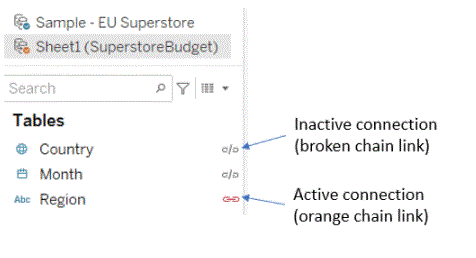
Work across blended data sources:
Due to the character of the information combination, there are some things to stay in mind once acting on all Data sources. Doing calculations for fields from over one Data supply could also be slightly totally different than customary statistics. The calculation should be created from one Data source; this can be displayed at the highest of the calculation editor.
Consolidation. Any fields utilised in another Data supply can be available in and integrated — by default, SUM, however this may be modified. as a result of statistics cannot mix numerical and nonlinear arguments, fields from the information supply within the calculation should even be enclosed. (In the photographs below, the total mixture was additional mechanically and also the total aggregation was additional directly.)
Dot notation. Any field documented in another Data supply can consult with its Data supply exploitation dot markers. (In the photographs below, within the sample in-built Sample – Superstore, the Sales Target field becomes [Tags.]. [Sales target]. These are parallel versions of an equivalent range engineered into every Data supply. In each case, this can be total (Sales) / total (Sales Target).
In addition to treating statistics slightly otherwise, there are unit limitations to secondary Data sources. You will not be ready to filter the sector from a secondary Data supply, and also the action filters might not work evidently with the integrated Data.
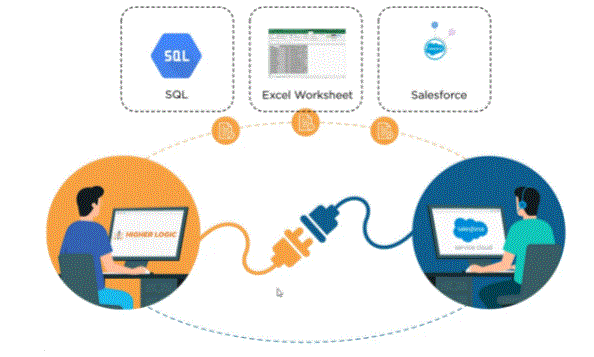
- Data Integration allows a combination of data from different data sources to be connected. Although, Integration Data only works with data from the same source.
- Example: If data comes from an Excel sheet and SQL website, then Data Merging is the only option to merge two types of data. However, if the data comes from two Excel pages, you can use data aggregation or data aggregation to compile data.
- Data integration is also the only option available when ‘joining’ tables may not work. This impossibility happens when the data set is ridiculous. Where joining can generate duplicate data or when using platforms such as Salesforce and Cubes does not support Joining.
Why we use Tableau Data Blending:
Understand primary and secondary data source:
Data integration needs a primary information supply and a minimum of a secondary information supply. the primary information supply employed in the read becomes the first information supply and defines the read. this will limit values from a secondary information supply solely the corresponding values in the first information supply seem. This is often compared to the left being part of.
For example, if the first information supply incorporates a Moon field that solely contains Gregorian calendar month, May, and June, any views engineered throughout the months can solely show Gregorian calendar month, May, and June, although the secondary information supply has 12-month values. If the analysis you’re trying to find includes each twelve months, try and modify any major information supply by reconstructing the sheet and victimising another information supply initially.
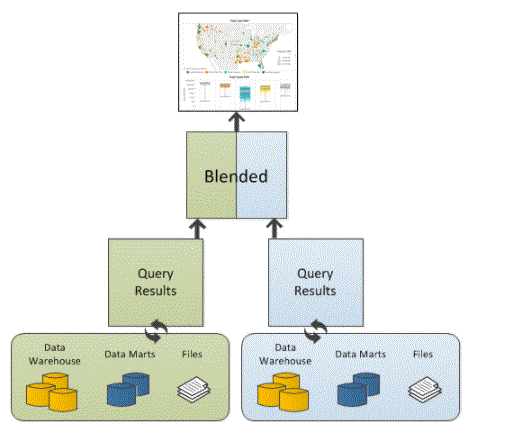
- It solves many data granularity problems
- Solves collection problems
- It meets the requirements for visual analysis
Benefits of data blending:
Consolidating Data Using a Table
In the study of Ms. Morton, Tableau is equipped with two methods of data integration. First, in the case where data sets are integrated (or may not be integrated), Tableau poses a self-binding query to generate visibility. However, in the event that data sets can be merged (or can be merged), Tableau integrates queries into each data source, and creates a flexible, integrated view that combines sets of integrated query results. For the purpose of visual inspection statistics, Ms. Morton (et al) found that data integration is a complementary technology in a common integrated approach with the following advantages:
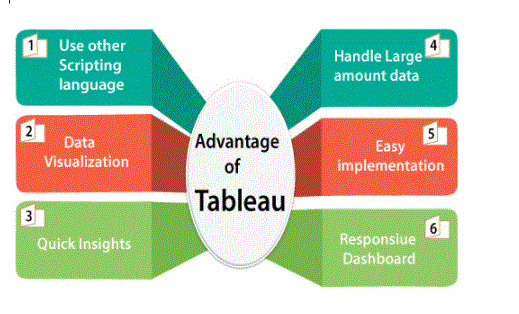
- The following is a list of a few restrictions on using Data Merge in Tableau.
- Data aggregation jeopardises the speed of query performance with high granularity.
- Cube data sources are used as primary data sources for data integration in Tableau and cannot be used as secondary data sources.
- During the Data Consolidation in the Tableau, if the second data source has any LOD (Data Level) Phrases, it is reduced after the data collection process is completed.
- SQL server data is a temporary data source; The tableau server will not support data integration and non-data integration while using a previously published data source as the primary data source.
Limitations of Data Blending in Tableau:
Conclusion
The Tableau data integration feature helps to connect to a data source across multiple data sources and provides relationships, integrates data, generates reports easily. This allows businesses to avoid using third-party tools and applications to connect and retrieve data from various business systems. This saves business effort and time. The integrating feature allows businesses to gain in-depth insight into business data.

